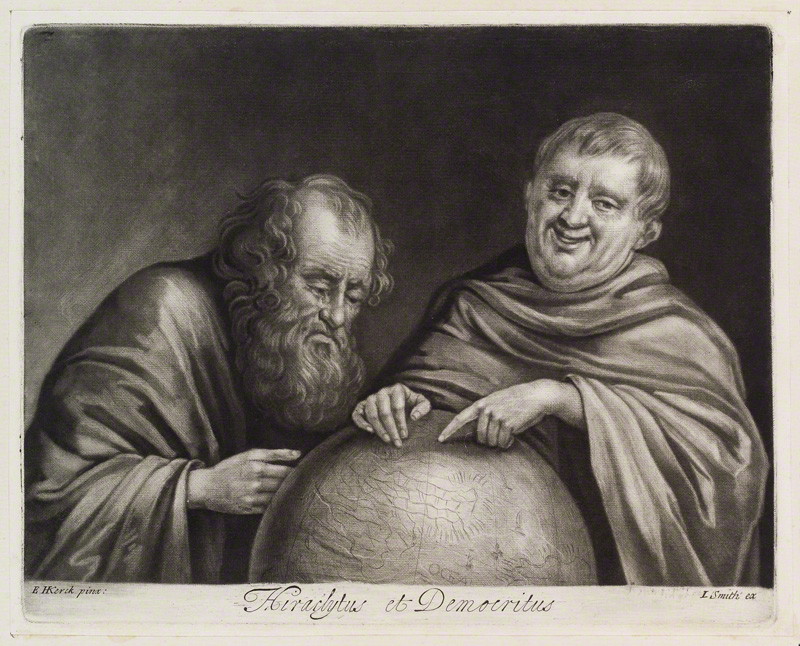
Hearaclitus and Democritus, the weeping and laughing philosophers, published by John Smith, after Egbert van Heemskerck the Elder, mezzotint, circa 1683-1729. National Portrait Gallery.
From this page you can find out more about the conference themes and speakers and preview the conference programme.
When: Wednesday 7th October, 9:30-6:00pm (followed by a drinks reception)
Where: The Court Room, Senate House, University of London
Fee: £15 waged, £10 unwaged (including MA and PhD students)
Registration: Online at the QMUL e-shop
Celebrating two recent Queen Mary publications: The Smile Revolution in 18th Century Paris, by Prof. Colin Jones and Weeping Britannia: Portrait of a Nation in Tears, by Dr Thomas Dixon, this conference invites expert speakers to consider the significance, representation and somatic expression of tears and smiles, laughter and weeping from 1100-1800. A collaborative event hosted by the School of English and Drama, the School of History, and the Centre for the History of the Emotions at Queen Mary University of London, the conference will draw on a number of different fields, including emotions history, physiognomy, art history, and theatre.
In the sixteenth century, the essayist Michel de Montaigne observed that we often ‘weep and laugh at the same thing.’ Although much independent research has been carried out on the role of tears and smiles in literary and historical culture individually, the two areas of enquiry are rarely considered alongside one another. This conference brings experts together to reflect on these two facial expressions independently but also their relationship to one another, and the myriad of emotions and contexts that can produce them.
Tears, smiles, weeping and laughter will all be discussed. Why is the medieval English poet so concerned with the face? How reliable did medieval scribes believe the face to be as an index of emotion? Why did some early modern writers sometimes argue for the avoidance of laughing in favour of the smile? How was laughter, in its various forms, used to legitimise the Republic during the French Revolution? These are just a few of the questions speakers will engage with.
Refreshments will be provided throughout the day, including lunch, and we are also pleased to be launching Dr Thomas Dixon’s new book, Weeping Britannia: Portrait of a Nation in Tears, at a wine reception after the conference (included in the registration cost). This will take place 6-7:30pm in the Jessel Room, Senate House, University of London.
Keynotes:
Professor Colin Jones
“The Smile and the Selfie: Some Pre-modern Perspectives”
Dr Thomas Dixon
“William Hogarth’s Sigismunda: A Tragicomic Tale”
We hope many of you will join us to reflect on the role of tears and smiles in medieval and early modern cultures. For updates in the meantime you can follow us on Twitter: @tears_smiles2015